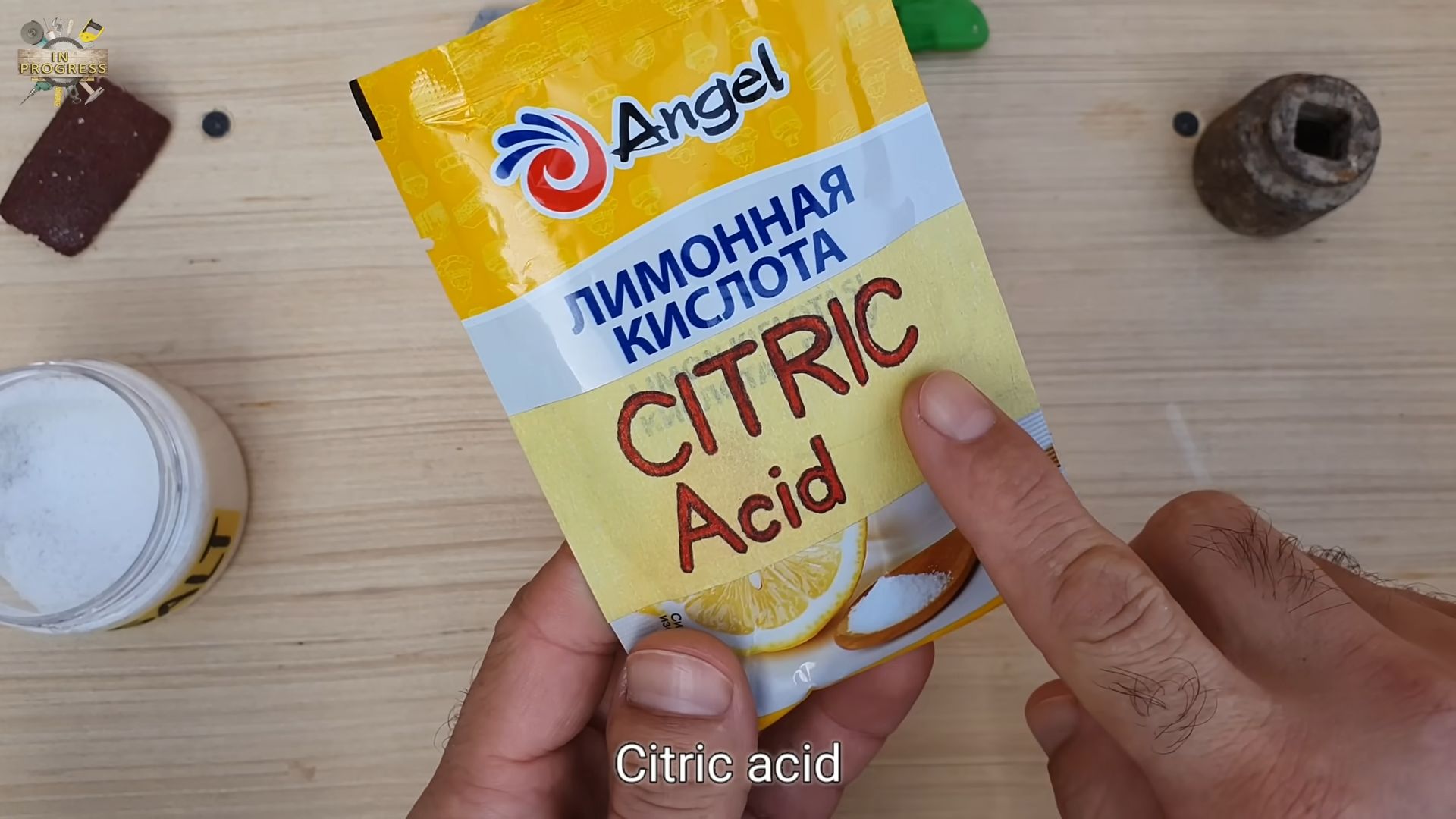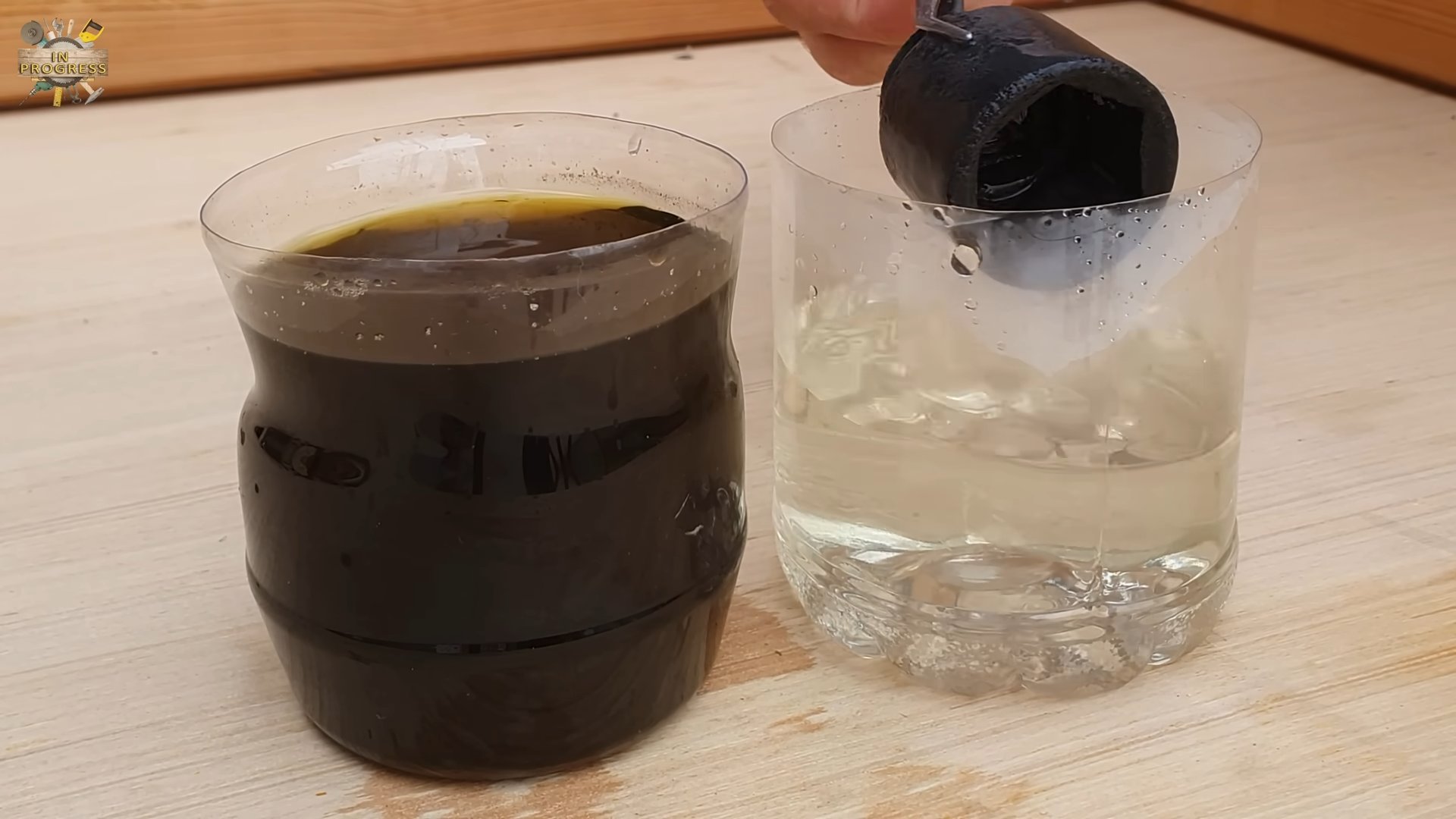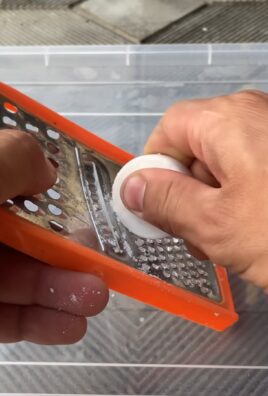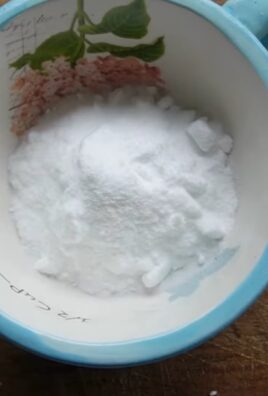Salt and hydrogen peroxide reaction – sounds like a science experiment, right? Well, it is, but it’s also your secret weapon for a thriving, pest-free garden! I know, I know, it sounds a little too good to be true, but trust me, this simple DIY trick can work wonders. For centuries, gardeners have sought natural and effective ways to protect their precious plants, often turning to time-tested remedies passed down through generations. Think of it as a modern twist on those age-old secrets!
Let’s face it, dealing with garden pests and diseases can be incredibly frustrating. You pour your heart and soul into nurturing your plants, only to watch them get devoured by unwanted visitors. That’s where the magic of the salt and hydrogen peroxide reaction comes in. This simple solution offers a safe, affordable, and effective alternative to harsh chemical pesticides. I’m going to show you how to create this powerful concoction and use it to keep your garden healthy and vibrant. Get ready to say goodbye to those pesky problems and hello to a flourishing garden!

DIY Teeth Whitening with Salt and Hydrogen Peroxide: A Comprehensive Guide
Hey everyone! I’m so excited to share this DIY teeth whitening method with you. I’ve been experimenting with natural ways to brighten my smile for a while now, and I’ve found that a simple mixture of salt and hydrogen peroxide can actually make a noticeable difference. Now, I want to be super clear: this isn’t a substitute for professional dental care, and you should always consult with your dentist before trying any at-home whitening treatments. But, if you’re looking for a gentle and affordable way to brighten your smile, this might be worth a try!
Understanding the Science (Kind Of!)
Before we dive in, let’s talk a little bit about why this works. Hydrogen peroxide is a mild bleaching agent, and it helps to break down stains on the surface of your teeth. Salt acts as a gentle abrasive, helping to scrub away those loosened stains. Together, they create a simple but effective whitening solution.
Important Note: We’re talking about *household* hydrogen peroxide, which is typically a 3% solution. *Never* use higher concentrations without consulting a dental professional. It can damage your enamel and gums.
What You’ll Need
Here’s a list of everything you’ll need to get started:
* 3% Hydrogen Peroxide (the kind you find at the drugstore)
* Fine Sea Salt (table salt works in a pinch, but sea salt is gentler)
* Baking Soda (optional, but it adds extra whitening power)
* A Small Bowl or Cup
* A Soft-Bristled Toothbrush
* Water
* A Timer or Clock
* A Mirror (for obvious reasons!)
Step-by-Step Instructions: Let’s Get Whitening!
Okay, let’s get down to business! Here’s how to make and use your salt and hydrogen peroxide teeth whitening paste:
1. Prepare Your Workspace: Make sure you have everything you need within easy reach. I like to lay down a paper towel to protect my countertop from any spills. Trust me, it happens!
2. Mix the Ingredients: In your small bowl or cup, combine the following:
* 1 teaspoon of 3% hydrogen peroxide
* 1/2 teaspoon of fine sea salt
* (Optional) 1/4 teaspoon of baking soda
Stir the mixture well until the salt and baking soda (if using) are completely dissolved. You should have a slightly foamy paste.
3. Apply the Paste: Dip your soft-bristled toothbrush into the paste. Make sure you don’t overload the brush; a little goes a long way.
4. Brush Gently: Now, here’s the key: *brush gently*. You don’t want to scrub too hard, as this can irritate your gums and damage your enamel. Use small, circular motions to brush all surfaces of your teeth. Pay special attention to areas that are more stained, like the front teeth.
5. Set a Timer: Brush for *no more than 2 minutes*. Seriously, don’t go over this time. Overexposure to hydrogen peroxide can be harmful.
6. Rinse Thoroughly: After 2 minutes, spit out the paste and rinse your mouth thoroughly with water. Make sure you get rid of all traces of the mixture.
7. Repeat (But Not Too Often!): I recommend using this treatment *no more than once or twice a week*. Overdoing it can lead to tooth sensitivity and enamel damage.
Dealing with Potential Side Effects
Okay, let’s be real. Like any whitening treatment, this DIY method can have some potential side effects. Here’s what to watch out for:
* Tooth Sensitivity: This is the most common side effect. If you experience tooth sensitivity, try using a toothpaste designed for sensitive teeth. You can also reduce the frequency of your treatments.
* Gum Irritation: If your gums become irritated or inflamed, stop using the treatment immediately. You may be brushing too hard or be sensitive to one of the ingredients.
* Enamel Damage: This is a serious concern, which is why it’s so important to brush gently and not overdo the treatment. If you notice any changes in your tooth enamel, consult with your dentist.
Tips for Maximizing Results (and Minimizing Risks!)
Here are a few extra tips to help you get the best results while staying safe:
* Use a Soft-Bristled Toothbrush: This is crucial for preventing gum irritation and enamel damage.
* Don’t Swallow the Paste: Hydrogen peroxide is not meant to be ingested. If you accidentally swallow some, rinse your mouth out immediately.
* Avoid Eating or Drinking for 30 Minutes After Treatment: This gives your teeth time to re-mineralize and helps prevent staining.
* Maintain Good Oral Hygiene: Brush and floss regularly to prevent future staining.
* Consider Oil Pulling: Swishing coconut oil in your mouth for 15-20 minutes can help remove surface stains and improve oral health. I do this a few times a week!
* Watch Your Diet: Limit your consumption of staining foods and drinks, such as coffee, tea, red wine, and berries.
* Stay Hydrated: Drinking plenty of water helps to wash away food particles and prevent staining.
* Talk to Your Dentist: I can’t stress this enough! Your dentist can give you personalized advice on the best way to whiten your teeth safely and effectively.
Alternative Ingredients and Variations
While the basic salt and hydrogen peroxide mixture is effective, you can experiment with a few variations to see what works best for you.
* Adding Essential Oils: A drop of peppermint or tea tree oil can add a refreshing flavor and antibacterial properties to your paste. Just make sure you’re using a food-grade essential oil.
* Using Aloe Vera: Adding a small amount of aloe vera gel can help soothe your gums and reduce irritation.
* Activated Charcoal: Some people swear by activated charcoal for whitening. You can add a small amount to your paste for extra stain-removing power. However, be careful, as it can be abrasive.
* Turmeric: While it might seem counterintuitive, turmeric can actually help whiten teeth. It has anti-inflammatory properties and can help remove surface stains. Just be prepared for a temporary yellow tint!
Tracking Your Progress
It’s a good idea to take before-and-after photos to track your progress. This will help you see how well the treatment is working and whether it’s worth continuing. I took pictures every week to see the difference!
When to Stop
It’s important to know when to stop using this treatment. If you experience any of the following, discontinue use immediately and consult with your dentist:
* Severe tooth sensitivity
* Gum pain or bleeding
* Changes in your tooth enamel
* Any other unusual symptoms
Long-Term Maintenance
Once you’ve achieved your desired level of whiteness, you’ll want to maintain your results. Here are a few tips:
* Continue to brush and floss regularly.
* Limit your consumption of staining foods and drinks.
* Consider using a whitening toothpaste.
* Get regular dental checkups and cleanings.
* Use the salt and hydrogen peroxide treatment sparingly, if at all.
My Personal Experience
I’ve been using this method for a few months now, and I’ve definitely noticed a difference in the brightness of my smile. My teeth are noticeably whiter, and I feel more confident when I smile. However, I’ve also experienced some mild tooth sensitivity, so I’ve been careful to use the treatment sparingly and to use a toothpaste for sensitive teeth.
Disclaimer: This DIY teeth whitening method is not a substitute for professional dental care. Always consult with your dentist before trying any at-home whitening treatments. I am not a dental professional, and this information is for educational purposes only. Your results may vary.
I hope this guide has been helpful! Remember to be patient, gentle, and consistent, and you may just be surprised at the results you can achieve. Good luck, and happy whitening!

Conclusion
So, there you have it! A simple, cost-effective, and surprisingly powerful DIY trick using just salt and hydrogen peroxide. This isn’t just another cleaning hack; it’s a testament to the power of basic chemistry in our everyday lives. The combination of these two readily available ingredients creates a potent solution that can tackle a variety of cleaning challenges, from brightening dingy grout to removing stubborn stains.
Why is this a must-try? Because it’s effective, economical, and environmentally friendlier than many harsh chemical cleaners on the market. You’re likely already have these ingredients in your home, saving you a trip to the store and reducing your reliance on products with potentially harmful chemicals. Plus, the satisfaction of creating your own cleaning solution and seeing it work wonders is incredibly rewarding.
But the beauty of this DIY trick lies in its adaptability. Feel free to experiment with variations to suit your specific needs. For instance, if you’re dealing with a particularly stubborn stain, try creating a paste of salt and hydrogen peroxide and letting it sit on the affected area for a longer period before scrubbing. You can also adjust the ratio of salt to hydrogen peroxide depending on the surface you’re cleaning. For delicate surfaces, use a higher concentration of hydrogen peroxide and a smaller amount of salt to minimize abrasion. Consider adding a few drops of your favorite essential oil, like lemon or tea tree, for a pleasant scent and added antibacterial properties. Remember to always test the solution on an inconspicuous area first to ensure it doesn’t damage the surface.
This salt and hydrogen peroxide solution is more than just a cleaner; it’s a versatile tool that can simplify your cleaning routine and help you maintain a sparkling home. We’re confident that once you try this DIY trick, you’ll be amazed by its effectiveness and versatility.
Now it’s your turn! We encourage you to give this simple yet powerful cleaning solution a try. Experiment with different variations, find what works best for you, and most importantly, share your experiences with us! Let us know in the comments below how you’ve used this DIY trick and what results you’ve achieved. Your insights and tips can help others discover the magic of salt and hydrogen peroxide and create a cleaner, healthier home. We can’t wait to hear your success stories!
Frequently Asked Questions (FAQs)
What exactly does the salt do in this mixture?
The salt acts as a mild abrasive, helping to scrub away dirt and grime. It also helps to activate the hydrogen peroxide, boosting its cleaning power. Think of it as a gentle scouring agent that enhances the overall effectiveness of the solution. Without the salt, the hydrogen peroxide would still work, but the cleaning process would be slower and require more effort. The salt provides that extra “oomph” to lift away stubborn stains and debris.
Is this solution safe to use on all surfaces?
No, it’s not. While generally safe for many surfaces, it’s crucial to test the solution on an inconspicuous area first. Avoid using it on delicate surfaces like polished wood, certain types of fabrics, or anything that could be easily scratched. The abrasive nature of the salt could damage these materials. Always err on the side of caution and test before applying it to a large area. For example, marble and granite countertops can be damaged by hydrogen peroxide.
What concentration of hydrogen peroxide should I use?
The standard 3% hydrogen peroxide solution, readily available at most drugstores, is generally sufficient for most cleaning tasks. Higher concentrations are available, but they are typically not necessary for household cleaning and can be more irritating to the skin and eyes. Stick with the 3% solution for safety and ease of use. If you are using a higher concentration, dilute it appropriately before use.
How long does the solution last once mixed?
The solution is best used immediately after mixing. Hydrogen peroxide degrades over time, especially when exposed to light and air. While it won’t become harmful, its cleaning power will diminish. For optimal results, mix only the amount you need for each cleaning session. If you do have leftover solution, store it in a dark, airtight container in a cool place, but be aware that it will gradually lose its effectiveness.
Can I use this solution to clean my teeth?
While hydrogen peroxide is sometimes used in teeth whitening products, this DIY solution is not intended for oral use. The concentration of hydrogen peroxide and the presence of salt could be harmful to your gums and enamel. Consult with your dentist for safe and effective teeth whitening options.
What safety precautions should I take when using this solution?
Always wear gloves to protect your skin from irritation. Avoid contact with your eyes. If contact occurs, rinse thoroughly with water. Work in a well-ventilated area to avoid inhaling the fumes. Keep the solution out of reach of children and pets. While the ingredients are relatively safe, ingestion can cause stomach upset.
Can I add other ingredients to this solution, like vinegar or baking soda?
It’s generally not recommended to mix hydrogen peroxide with vinegar or baking soda. Mixing hydrogen peroxide with vinegar can create peracetic acid, which is a potentially toxic irritant. Mixing hydrogen peroxide with baking soda can create a vigorous reaction that could be messy and potentially dangerous if contained. Stick to the simple combination of salt and hydrogen peroxide for the best and safest results.
What are some specific cleaning tasks this solution is good for?
This solution is excellent for cleaning grout, removing stains from countertops, brightening dingy sinks, and disinfecting surfaces. It’s also effective for removing mildew and mold in bathrooms. However, remember to test on an inconspicuous area first, especially on delicate surfaces. It can also be used to clean cutting boards, but make sure to rinse thoroughly afterwards.
How do I dispose of the leftover solution safely?
Since the solution is made from relatively harmless ingredients, you can typically dispose of it down the drain with plenty of water. However, if you’ve added any other ingredients, such as essential oils, check the disposal guidelines for those specific ingredients. Always follow local regulations for waste disposal.
What if the solution doesn’t seem to be working?
If the solution isn’t working as expected, try increasing the amount of salt or letting the solution sit on the affected area for a longer period before scrubbing. You can also try using a stiffer brush or a scouring pad for more aggressive cleaning. If the stain is particularly stubborn, you may need to repeat the process several times. Also, ensure that the hydrogen peroxide is still potent and hasn’t expired.





Leave a Comment